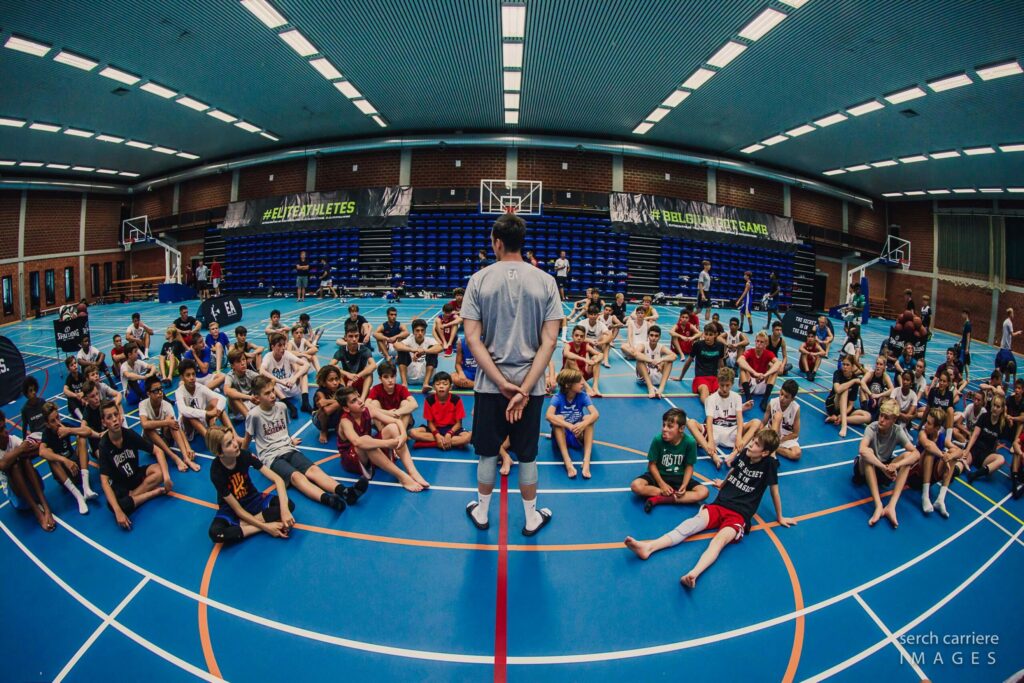09.12.20
Balancing – Disturbing with Hands, Feet & Ball

This is one of my favorite games I play with players from all ages to develop balancing.
To be able to move athletically on the court, you need to have good balance and strong feet, freedom in your ankle mobility, stability in your knees and flexion in the hip. All of this needs to be working well together of course, but it is good to test how players respond in a dynamic environment.
Multi-directional powerful movement starts from the feet, so we spend a lot of time (often barefoot) making sure that we train the feet well in myriad ways. In this game it is very simple to add variety and new pressures to test the players.
If you observe the positions my lower body moves in and out of, you can observe many of the squat and hinging variations you observe being done as isolated exercises in strength training. However here, the body is demanded to react from those positions. It does not know what the next disturbance of the partner will be so it needs to more tuned on than for example in the setting of a very controlled single leg squat.
Both have value, and we use both solo training and games to help our players to develop physical self-awareness and athleticism that has transfer to dynamic sports situations.
We often begin the game in a very gentle way where the player who is disturbing the balancer can only use his hands to try to get him out of balance. Then he can only use his leg to disturb him. Both can be combined. There can be an uneven role distribution in the game or players can have the same roles: both try to disturb each other in their aim to stay in balance.
Depending on how the group responds, you can observe what other tests you can add in here. Often I have coaches who are present run around and ask for the ball making eye contact with the balancer or I tell them to slap their ball away when they forget about protecting it. This way they’ll not only have to stay present to their fixed partner but also to a potential threat or task coming from another direction. This trains them to cognitively stay present and shift their external attention between multiple things happening on the court – and simultaneously find balance in their body
I believe that the element of awakening internal and external presence is an element we often forget about in warmups or athletic development practice. Often I see rather cognitively passive preparatory work being done by players – they are not very present in it – while the coach expects them to be immediately tuned on to them in the basketball specific part of the practice.
My aim in how I set up movement practices with a combination of individual work and games with a partner is to get players both physically and mentally attuned to their body, the other players and the chaotic environment of game with its complex physical and perceptional demands.
Here you some players we worked with at a camp in Milan try out an basic variation of the game.
Find more ideas on the balancing category in the athletic development video library of our Online Coaches Platform at eliteathletesonline.com.
The complete post is written by our Play-Perform Director and co-founder Olivier. Find more like these in the members section of our online platform for coaches education. Learn more about the platform here.
Are you a player who finds it difficult to keep your motivation high to train during these times? Is your training often uninspired and inefficient? Or not going to the court because you don’t know how to plan your practices? Then we have two perfect online tools for you:
- “I want to get an online intro the the EA way of training that I can use immediately (basketball training videos, athletic training, skill breakdown study).” → 30-Day Player Zone for only €19!
- “I want to go all out and become a better player and a student of the game by getting hundreds basketball skill training videos, athletic training warmups, mobility training, and 60 minutes of skill breakdown study.” → Player Platform for a €99 investment!

